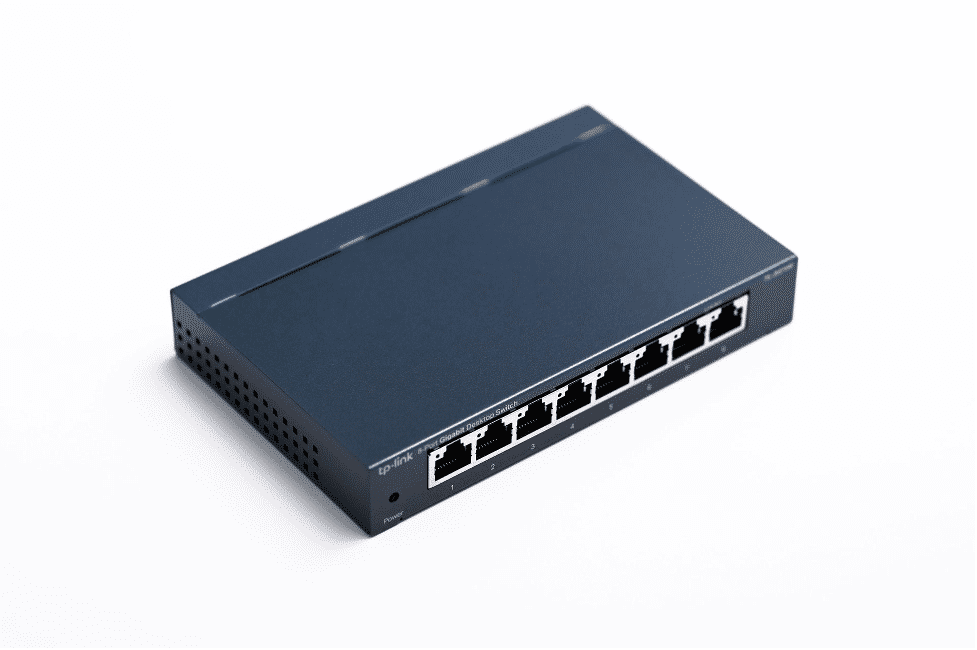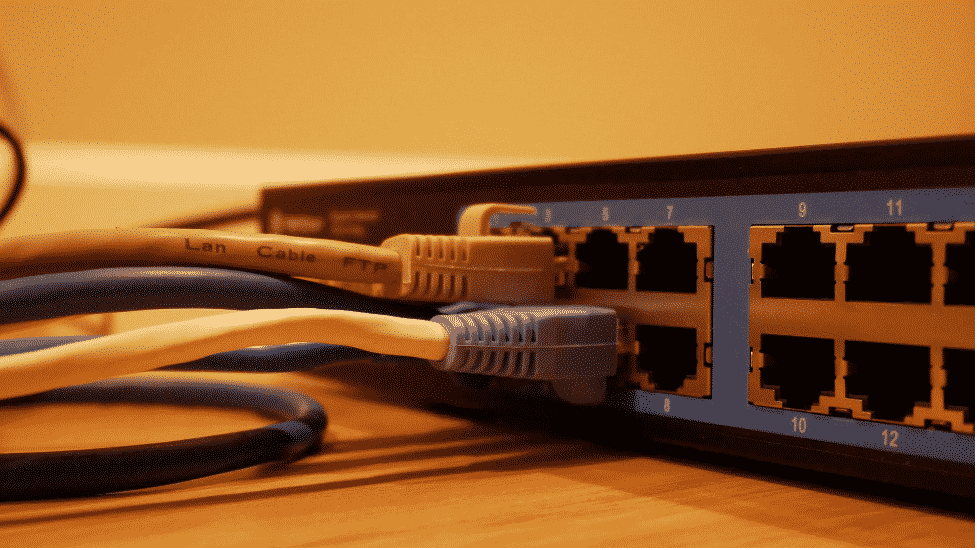When you purchase through links on our site, we may earn an affiliate commission. Here’s how it works.
Connecting Landline Phone to WiFi Router – Overview
Landlines may seem like relics from a bygone era with numerous communication apps on the market. According to a 2017 USA survey, 35% of respondents reported using landlines for less than 10 minutes daily.
However, those who understand the benefits of having a home phone connected to a Wi-Fi network can take advantage of additional advantages.
This article provides all the information you need to connect a landline phone to a WiFi router. The process is straightforward. Follow the steps below to quickly get your landline up and running.



VoIP And The Importance Of A Router
Thanks to technological advancements, traditional phone services and analog signals are obsolete. Welcome to the digital age.
Today’s phone service, Voice over Internet Protocol (VoIP), converts incoming voice signals into digital data and transmits them over the Internet.
Thus, internet service is essential.
To use VoIP, you’ll need to connect your phone to the router. Although this may seem complicated, it is pretty straightforward.
VoIP allows you to make regular phone calls over the Internet instead of using traditional phone lines, offering all the services that traditional phone lines do.
Connecting is simple, and you’ll have your system operational quickly.
As we move towards the future, innovations continue to emerge and enhance the quality of people’s phone services.
Considerations Before Connecting Landline Phone To WiFi Router

How to Connect Landline Phone to WiFi Router – Considerations Before Connecting Landline Phone to WiFi Router
Understanding the basics of WiFi routers and internet speeds is crucial before proceeding with the methods in this guide.
Firstly, let’s discuss the WiFi router. A wireless connection to a home phone is not possible; it must be physically connected to a landline telephone service.
Phone And Router Connection Types
WiFi routers can connect to the internet using DSL or cable. AT&T and CenturyLink offer DSL networks, while Charter Spectrum and Cox provide cable networks.
Fiber connections are becoming more common due to their superior speed and reliability despite the significant infrastructure costs of installing these networks. A Voice over IP (VoIP) landline phone is compatible with all these services.
Internet Speed
The quality of a landline is significantly impacted by network speed. High-speed internet ensures crystal-clear sound and no dropped calls.
Cable connections are generally faster than DSL, reaching up to 30Mbps. Many internet service providers now offer bandwidths up to 940 Mbps.
Internet speed can vary based on location and is influenced by several factors, including network traffic, weather conditions, and the number of connected devices.
WiFi Standards
WiFi technology has evolved through several standards, including 802.11a and 802.11b, each supporting different data transfer speeds.
The latest standard, 802.11n, can transfer data up to 940 MB/s.
These standards dictate the speed at which data can be transmitted over your connection.
If your WiFi router does not support the latest standards, you may experience slower download speeds and potential quality degradation in voice calls.
How to Connect Landline Phone to WiFi Router

Before you know it, incoming voice signals will be transformed into digital sounds. However, the setup depends on your modem and router configuration.
You might have a single device that acts as a modem and a router, or you might have two separate devices. If the modem and router are individual units, let’s begin by distinguishing them.
1. Turn Off The Router
For a broadband connection, you’ll need a modem and a router, which can be separated or combined into a single device.
If your setup involves separate devices, turn off the router. However, do not disconnect any cables, as this could make it more challenging to identify the ports later.
2. Connect Ethernet Cable
Next, you’ll need an Ethernet cable. Your phone service provider may supply one, or you may need to purchase one separately.
Once you have it, plug one end of the cable into the port on the back of your router and the other end into the corresponding connector on your cable modem.
3. Connect The Router And The Computer
After connecting the router and modem, take another Ethernet cable and plug one end into the LAN port on the back of the router and the other end into your computer’s Ethernet port.
4. Connect The Phone And The Router
Now, connect the analog home phone to the router.
Look for the phone adapter port on the back of the router, usually labeled ‘Phone 1’. Your home phone is now ready to use.
5. Switch On The Computer And The Router
With everything in place, turn on the system to check if it’s operational. Observe the indicator lights on the computer and modem as they blink a few times before stabilizing.
Next, connect your router to a power source and switch it on. Wait for the router’s indicator light to stabilize as well. Please proceed to the next step once it’s stable.
6. Test Your Phone
Testing your phone is straightforward; dial a number and see if the person on the other end responds.
You can dial a toll-free number or use a family member’s cell phone number for this test. Many opt for the latter because it’s free.
Alternative Method – Using a Modem
1. Switch Off The Device
For safety, turn off the device before connecting any cables.
2. Locate The Phone Port
The ports are usually located on the back if your device serves as both a modem and a router. Turn it over to find the phone port.
3. Connect The Cables
Next, obtain an Ethernet cable. Plug one end into the device’s phone port and the other into the back of the phone.
4. Turn On The Device
With all cables properly connected, turn on the router. It will take some time for the device to stabilize.
Monitor the indicator lights; they will flicker for a while before stabilizing. Once stable, you’re ready to go. Your phone is now operational.
5. Test Your Phone
The final step is to test if the landline phone is working correctly. Dial a number and wait for a response.
You can call your or a family member’s mobile or toll-free number if preferred.
What to Do If There Is a Problem
If you encounter issues making a call, double-check all cables and connections.
A faulty wire connection could cause problems like no dial tone. If this doesn’t solve the issue, ensure the phone functions correctly.
If you cannot find the ports on your landline phone that connect to your Wi-Fi router or modem, you may not be able to connect your landline phone to your Wi-Fi network.
If you cannot resolve the issue, it is advisable to consult an expert in the field for assessment and repair.
Problem Connecting WiFi to Landline Phone
If you wish to connect your landline phone to the internet, a WiFi network alone will not suffice. A physical connection between the phone and the router is required. For a wireless internet phone, consider getting a cordless phone instead.
Internet Service Without Landline
With the prevalence of the internet, one might think it’s necessary for home phone service. Fortunately, this is not the case.
If you only need a phone, you do not need to bundle services. If you have a cable outlet at home, you can opt for a standalone phone service.
While not all providers offer this service, many do. Choose a provider that is available in your area and offers extensive coverage.
Look for services that are affordable, reliable, and feature-rich.
Conclusion
That’s everything you need to know about connecting a landline phone to a WiFi router.
Now that you have all the information, nothing is stopping you. Soon, you’ll be able to enjoy calls with your loved ones on the landline!
In summary, connecting a landline phone to a WiFi router requires a modem, just a router, and a few cables.
Follow the instructions provided above, adhering to established protocols and safety standards.
If you encounter any issues or have concerns, contact your internet service provider for further assistance.
See Also
Best Wireless Headsets for Landline Phone
How to Extend Wifi Range With Another Router
How to Change Wifi Password (Spectrum)